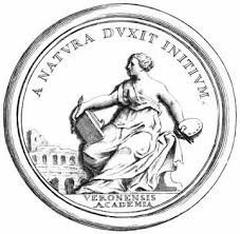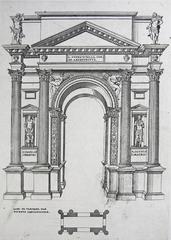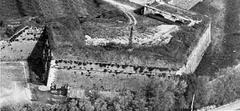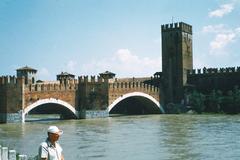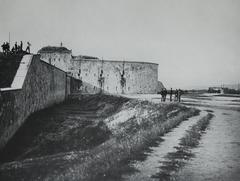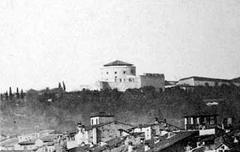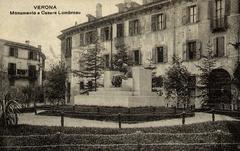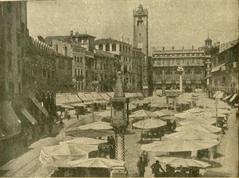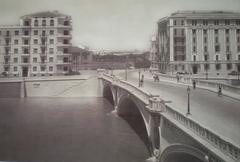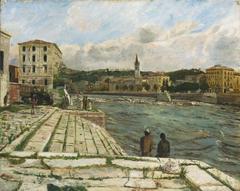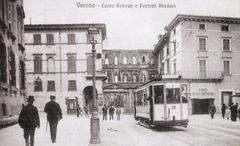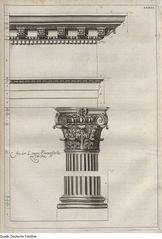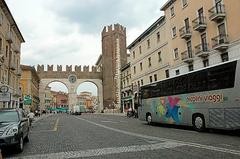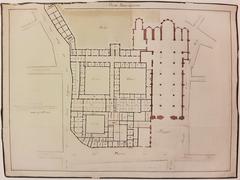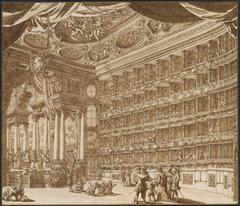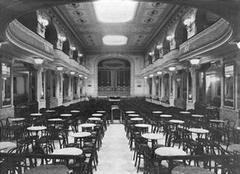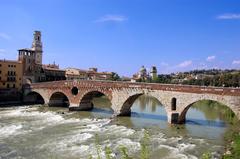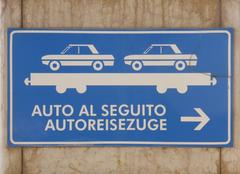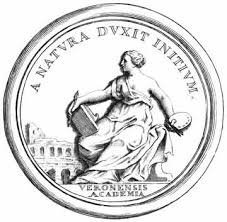
Visiting the Academy of Fine Arts Verona, Italy: Tickets, Hours, and Tips
Date: 14/06/2025
Introduction: A Window into Italian Art and Culture
The Academy of Fine Arts Verona (Accademia di Belle Arti di Verona) stands as a beacon of Italian artistic tradition and contemporary innovation. Established in 1764 during the Enlightenment, it transitioned Verona’s art scene from private studios to formal education, ensuring the preservation and evolution of the city’s creative legacy. Today, the Academy is not only a prestigious educational institution but also a vibrant cultural hub, drawing visitors into the heart of Verona’s storied past and dynamic present. Its central location provides easy access to major landmarks, making it a key stop for art lovers and cultural explorers (Accademia di Belle Arti Verona; Go! Go! Italia; Visit Verona).
Table of Contents
- History and Significance
- Visiting Information
- Exhibitions and Collections
- Facilities and Amenities
- Nearby Attractions
- Events and Educational Programs
- Visitor Tips
- FAQs
- References
History and Significance
Founding and Early Years
Founded in 1764, the Academy was part of broader Enlightenment reforms that emphasized reason and formal education, departing from the guild-based training that had previously dominated Italian art. Early curricula were modeled after those of Florence and Venice, focusing on painting, sculpture, architecture, and the study of anatomy and classical antiquity. Drawing from life and the study of classical forms were central to the institution, establishing a foundation for centuries of artistic achievement (Accademia di Belle Arti Verona).
19th and 20th Century Evolution
The 19th century saw the Academy expand its curriculum, incorporating movements like Romanticism and Realism. With Italy’s unification and the Academy’s status as a state institution, resources and recognition grew. The 20th century brought further modernization—new disciplines such as scenography and digital arts were introduced, and the Academy adapted to European educational standards, including the Bologna Process. Its main campus, housed in historic buildings, remains a testament to Verona’s architectural and artistic heritage.
Contemporary Role
Today, the Academy is recognized as one of Italy’s leading institutions for higher arts education, offering bachelor’s and master’s degrees across a diverse range of disciplines. It is closely linked with Verona’s cultural life, collaborating with local museums and galleries, and participating in international art projects (Go! Go! Italia).
Visiting Information
Hours and Admission
- Opening Hours: Tuesday to Sunday, 10:00 AM–6:00 PM. Closed Mondays for academic use and maintenance. Hours may extend during special events or exhibitions.
- Admission: Tickets range from €8–€12 for adults, with discounts for students, seniors, and children. Special exhibitions may require separate tickets. Many public events and student exhibitions are free; check the official website for details (Visit Verona).
- Booking: Advance ticket purchase is recommended during peak seasons and for special events.
Accessibility
The Academy is committed to accessibility, offering ramps, elevators, and accessible restrooms. Visitors with specific needs should contact the administration in advance to arrange assistance.
Guided Tours
Guided tours, available in Italian and English, can be arranged by appointment. Tours are led by art historians or advanced students and provide in-depth insights into the Academy’s collections and history. Group and school tours, as well as thematic workshops, are offered throughout the year.
Photography
Photography is generally permitted in public exhibition areas (without flash), but restrictions may apply during temporary exhibitions or special events. Always check posted guidelines or ask staff for clarification.
Exhibitions and Collections
The Academy’s exhibitions are dynamic, featuring both permanent and rotating displays of student, faculty, and guest works. These range from classical paintings and sculptures to contemporary multimedia installations. The Academy’s archives preserve a wealth of historical documents and artworks, offering a unique perspective on the evolution of artistic education in Verona.
Collaborations with local institutions, such as the Castelvecchio Museum and Galleria d’Arte Moderna Achille Forti, broaden the scope and diversity of exhibitions (Experto Italy).
Facilities and Amenities
- Café: On-site or nearby, serving coffee and light refreshments.
- Bookshop: Sells exhibition catalogues, art books, and Veronese souvenirs.
- Rest Areas: Seating is available throughout the galleries.
- Lockers/Cloakroom: Near the entrance for visitor convenience.
Nearby Attractions
The Academy’s central location in the Veronetta district makes it easy to combine your visit with other key sites:
- Verona Arena: Iconic Roman amphitheater known for opera performances.
- Castelvecchio Museum: Houses medieval and Renaissance art collections.
- Giardino Giusti: Renaissance gardens with panoramic city views.
- Piazza delle Erbe: Vibrant marketplace and historic square.
- Street Art: Explore contemporary murals in the surrounding area (Verona Street Art Map).
Dining options abound, from local trattorias to fine restaurants, featuring specialties like risotto all’Amarone and regional wines.
Events and Educational Programs
The Academy regularly hosts artist talks, lectures, workshops, and performances, often in conjunction with citywide festivals such as Art Week, Verona Jazz Festival, and Vinitaly. Public events are posted on the official website and at the information desk (Experto Italy).
Workshops and outreach programs engage the local community and youth, fostering an appreciation for the visual arts and encouraging future generations of artists.
Visitor Tips
- Plan Ahead: Check the Academy’s calendar for special events and exhibitions.
- Dress Comfortably: Wear shoes suitable for walking and exploring.
- Climate: Verona summers can be hot; bring water and dress in layers. Autumn/winter may require an umbrella (National Traveller).
- Combine Visits: The Academy is close to other major attractions—plan a full cultural day.
- Language: Staff primarily speak Italian; English is commonly available for materials and tours.
- Sustainability: Use public transport or walk to help preserve Verona’s historic center (Visit Verona).
Frequently Asked Questions (FAQ)
Q: What are the Academy’s visiting hours?
A: Tuesday to Sunday, 10:00 AM to 6:00 PM. Closed Mondays.
Q: How do I buy tickets?
A: Online via the official website or at the ticket office. Advance booking is recommended during peak periods.
Q: Is the Academy accessible?
A: Yes, with ramps, elevators, and accessible restrooms. Contact the Academy for specific needs.
Q: Can I take photographs inside?
A: Non-flash photography is generally allowed in permanent exhibitions; check for restrictions in temporary shows.
Q: What’s the best time to visit?
A: Weekday mornings and the shoulder seasons (March–April, October–November) tend to be quieter.
Summary and Final Tips
A visit to the Academy of Fine Arts Verona is a journey through centuries of Italian artistic mastery, seamlessly blending tradition and modern creativity. With its accessible location, dynamic exhibitions, educational programs, and proximity to major Verona landmarks, the Academy is an essential stop for anyone interested in art and culture. For the best experience, plan ahead, make use of digital guides like the Audiala app, and immerse yourself in the vibrant spirit of Verona’s artistic heritage (Accademia di Belle Arti Verona; Go! Go! Italia; Visit Verona).
References
- Academy of Fine Arts Verona: Visiting Hours, Tickets, and Historical Insights, Universita.it
- Visiting the Accademia di Belle Arti di Verona: Hours, Tickets, and Cultural Insights, Go! Go! Italia
- Visitor Experience and Practical Tips, Experto Italy
- Visiting Verona’s Historic Monuments: Hours, Tickets, and Essential Visitor Information, Verona Tourism
- Visit Verona: A treasure trove of history, art and culture, Visit Verona
- When to go to Verona: Climate and best period, National Traveller
